Samsung Galaxy S23 Ultra vs iPhone 14 Pro vs Google Pixel 7 Pro
These are three of the hottest new smartphones, but which has the best camera? We test them to find out.

So long as the big three phone makers keep churning out top-specced phones year after year, there will be the endless debate of which phone is the best camera phone for photography and video.
Apple has long been the dominant premium phone maker, with its iPhone range dominating sales charts around the world. Apple’s camera strategy has always been less-is-more, never one to be the first to a headline feature, it has concentrated on fully incubating ideas, and putting some of the best camera and software experiences together. With the iPhone 14 Pro, released in Oct 2022, Apple finally relented and upgraded the main camera sensor to 48MP, allowing more pixels for Apple’s proprietary Deep Fusion processing to play with.
• To view the photos selected for this article in maximum quality, you can make them full-screen using the icon on the bottom right of each photo, where you can also open the full-sized original quality image.
Samsung by comparison, is very much more-is-more, always reaching to add the very latest new and exciting developments in its latest flagship. The Samsung Galaxy S23 Ultra is the newest phone on the block, released in February 2023, and packed with all the latest camera and processor tech, including a big AMOLED screen, an inbuilt S Pen stylus, and a total of five separate cameras including a 200MP main sensor and a 10x optical zoom, emphasizing Samsung’s generous approach to phone design.
Finally, our last contender comes from Google, which despite making the world's most popular operating system, is far from the biggest-selling hardware brand (yet). However, the Pixel phones have crept onto everyone's radar slowly and steadily with its plaudit-grabbing software-based approach, improving on pedestrian camera hardware with some artificial intelligence magic. Released in October 2022, the Pixel 7 Pro is Google’s most ambitious and premium phone yet, with a hugely improved build quality, a beautiful screen, and a trio of cameras including a 50MP main sensor and a 5x optical zoom.
| Header Cell - Column 0 | Samsung S23 Ultra | Google Pixel 7 Pro | iPhone 14 Pro |
|---|---|---|---|
| Main Camera | Pixels: 200MP, Pixel size: 0.6μm, FOV: 85˚, Aperture: f/1.7 | Pixels: 50MP, Pixel size: 1.2μm, FOV: 82˚, Aperture: f/1.9 | Pixels: 48MP, Pixel size: 1.22μm, Aperture: f/1.78 |
| Telephoto Camera | Pixels: 10MP, Optical zoom: 10x, Pixel size: 1.12μm, Focal length: 230mm, FOV: 11˚, Aperture: f/4.9 | Pixels: 48MP, Optical zoom: 5x, Pixel size: 0.7μm, Focal length: 120mm, FOV: 20.6˚, Aperture: f/3.5 | Pixels: 12MP, Optical zoom: 3x, Pixel size: 1.0μm, Focal length: 77mm, Aperture: f/2.8 |
| Telephoto Camera (secondary) | Pixels: 10MP, Optical zoom: 3x, Pixel size: 1.12μm, Focal length: 70mm, FOV: 36˚, Aperture: f/2.4 | - | - |
| Ultra-wide Camera | Pixels: 12MP, Pixel size: 1.4μm, FOV: 120, Aperture: f/2.2 | Pixels: 12MP, Pixel size: 1.25μm, FOV: 126˚, Aperture: f/2.2 | Pixels: 12MP, Pixel size: 1.4μm, FOV: 120˚, Aperture: f/2.2 |
| Front (selfie) Camera | Pixels: 12MP, Pixel size: 1.12μm, FOV: 80˚, Aperture: f/2.2 | Pixels: 10.8MP, Pixel size: 1.22μm, FOV: 92.8˚, Aperture: f/2.2 | Pixels: 12MP, Aperture: f/1.9 |
I have taken hundreds of photos with all these cameras to test out how each system handles different kinds of photography. I have broken them all down into different categories below to compare, with some example images hand-picked from many to show the differences (or similarities) in the cameras. As a side note, the cameras were tested in the middle of a cold, dull winter here in the UK, and the pictures reflect that! Your experience might differ in brighter climates.
1. Camera modes
First, we will take a look at the level of control over the camera settings that each phone manufacturer gives you out of the box. While there are third-party apps such as Halide or Adobe Camera that give each phone more fine-grained control and RAW imaging, we want to assess each phone's default camera experience.
Samsung's 'more' approach shines through again here, as the only manufacturer to offer a full manual mode directly in the native camera app, allowing you to choose every setting from the aperture, shutter speed, white balance, and exposure compensation, while this might be overkill for most, it is a very appreciated option for those that want it. In comparison, the Pixel 7 Pro offers a slider for exposure compensation and white balance, which are probably the only two settings needed for most. The iPhone 14 Pro only offers a gesture to change exposure compensation.



Above: The camera apps for each of our contenders.
For optional camera modes, it is a much tougher race with all three phones offering mostly the same features. Google currently has the edge with its motion photos, a clever use of AI to produce effortless and instant action panning shots and long exposure photos. Google and Samsung also both offer a specialized astrophotography mode for capturing better images of the night sky.
Otherwise, all three phones have very similar and comparable optional modes, including a night photography mode, for better low-light images, portrait photography for artificially blurred backgrounds, panoramic modes for stitching images together in-camera, and a macro mode for close-up images.
Winner: Samsung Galaxy S23 Ultra / Google Pixel 7 Pro (tie) – Samsung's pro photo and video modes are a boon for serious shooters, but Google software trickery to create Motion shots is unmatched. Apple fails to offer any photo modes over the other two.
2. Main cameras
The main camera on all three phones is where each company has focused its most attention on development and marketing, this test will explore how they work in general-purpose photography during daytime or good light (for low light and night shots see section 4).
The Samsung Galaxy S23 Ultra's big headline-grabbing feature is its 200-megapixel main camera sensor, and yes, you can actually take full 200MP photos, although be aware that each 200MP is about 50MB in size compared to 5MB for its 12MP version. The 200MP photos are considerably more detail packed than the 12MP photos, although in almost all cases of using the images online, especially social media, the 200MP files will need to be reduced and that extra detail will be lost to varying degrees.


Above: A 50% crop of the 200MP and 12MP images. Look especially closely at the detail in the tree and brickwork in the three images, the 200MP photo packs in a lot more detail to the point where it looks like an entirely different device took the image, but is ten times the file size.
The Galaxy's camera in its usual 12MP default mode exhibits Samsung's signature photographic style, which is large amounts of oversharpening and oversaturation. This will come down to individual preference in how you like your images to look, but personally, I cannot get along with Samsung's style. The sharpening can look very overprocessed and the colors, especially skies and trees, can look so saturated it is occasionally nauseating. The processing on these images sometimes looks like they have come from a lesser phone that is trying to account for its shortcomings in hardware, and Samsung doesn’t need to process photos like this.
The Google Pixel 7 Pro has a 50MP main sensor, but you cannot unlock its full potential, with it only giving you the option of 12MP photos, but then the 12MP photos look this good then you can’t complain too much. The Pixel photos are the most naturally balanced out of all three phones, with colors being very accurate, if occasionally a little washed out, photos look naturally sharp without looking processed, and also white balance reflecting reality, even if it is a drab winter's day.
The iPhone 14 Pro is neck-and-neck with the Pixel, its 48MP sensor reduces to 12MP photos, but it offers the same great sharpness, with bright but not overdone colors, and great color balance, I cannot fault the main iPhone 14 Pro camera for outdoor shots.



Above: Samsung has created a sky that is a much brighter blue, this was a cold winter's day in dreary London, not Mykonos. This is a scene with lots of lines and textures, and the S23 Ultra oversharpens the details a lot producing a weird effect in the stony floor and trees. The iPhone and Pixel create a much more accurate scene.
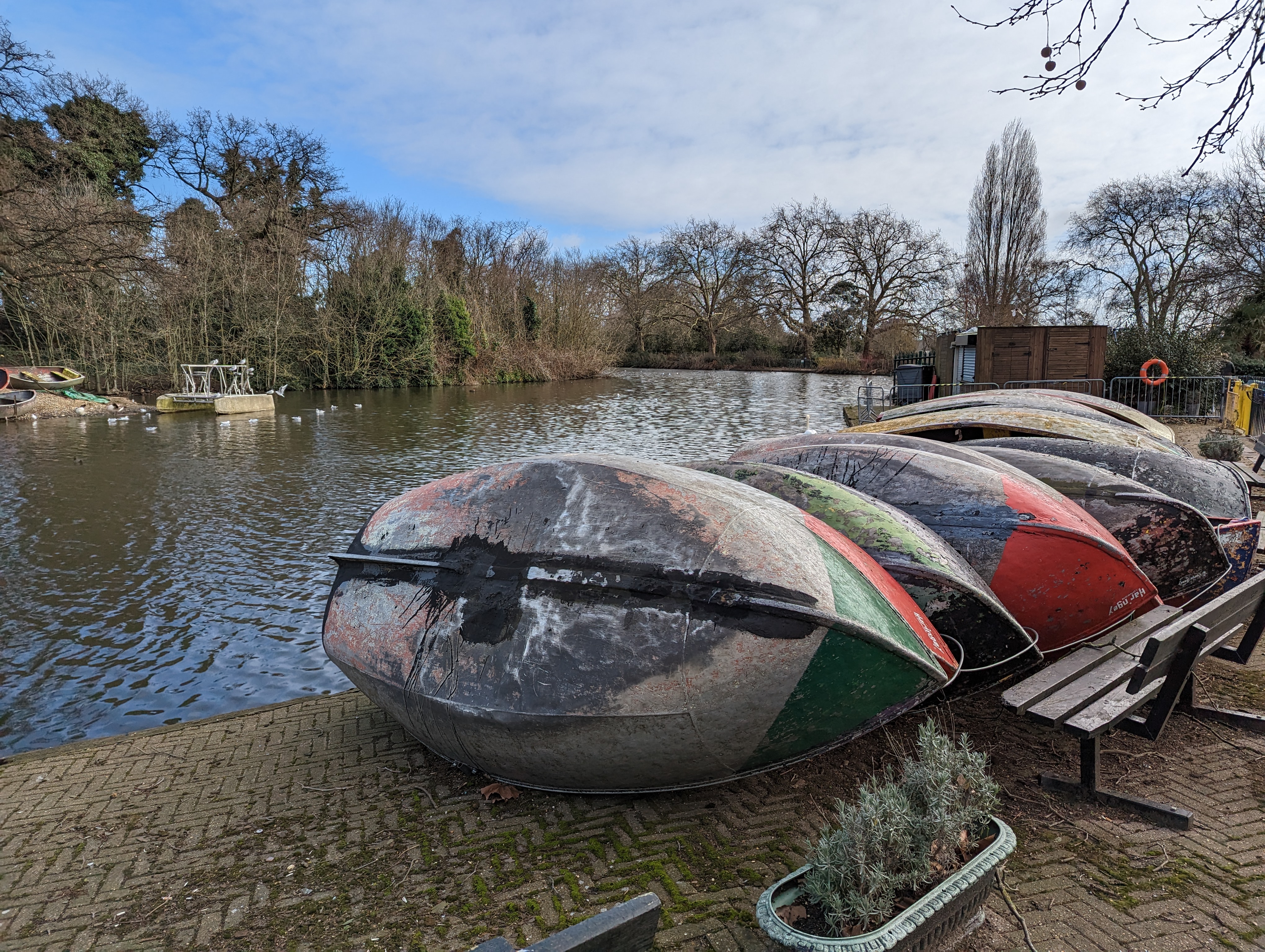


Above: The Pixel and iPhone again can't really be separated on this one, with both producing lovely images with great sharpness near to far. The S23 Ultra again comes in with oversaturation in the sky, and while the near focus and sharpness on the boats are very good, the clarity on the background is not as strong.
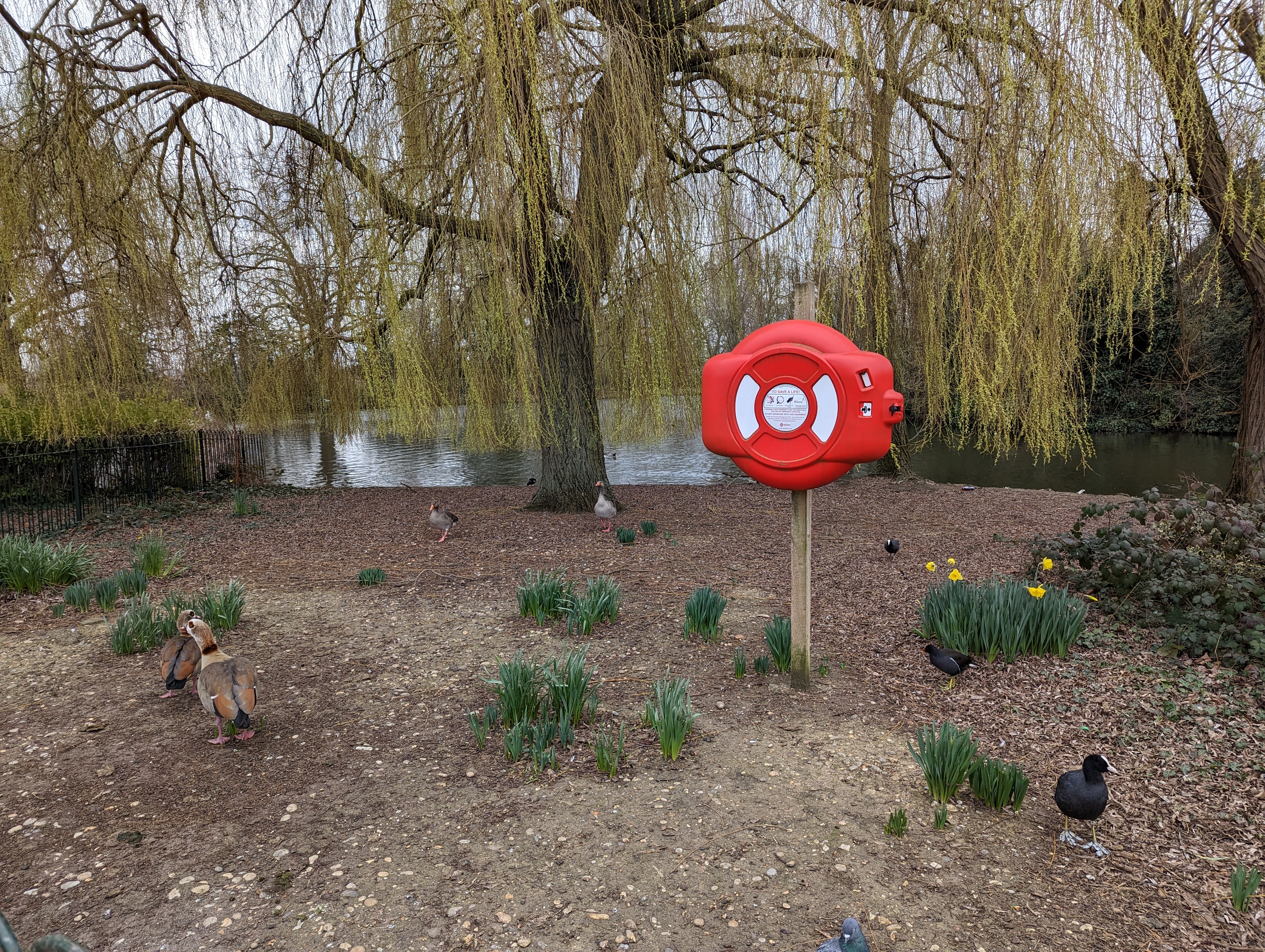
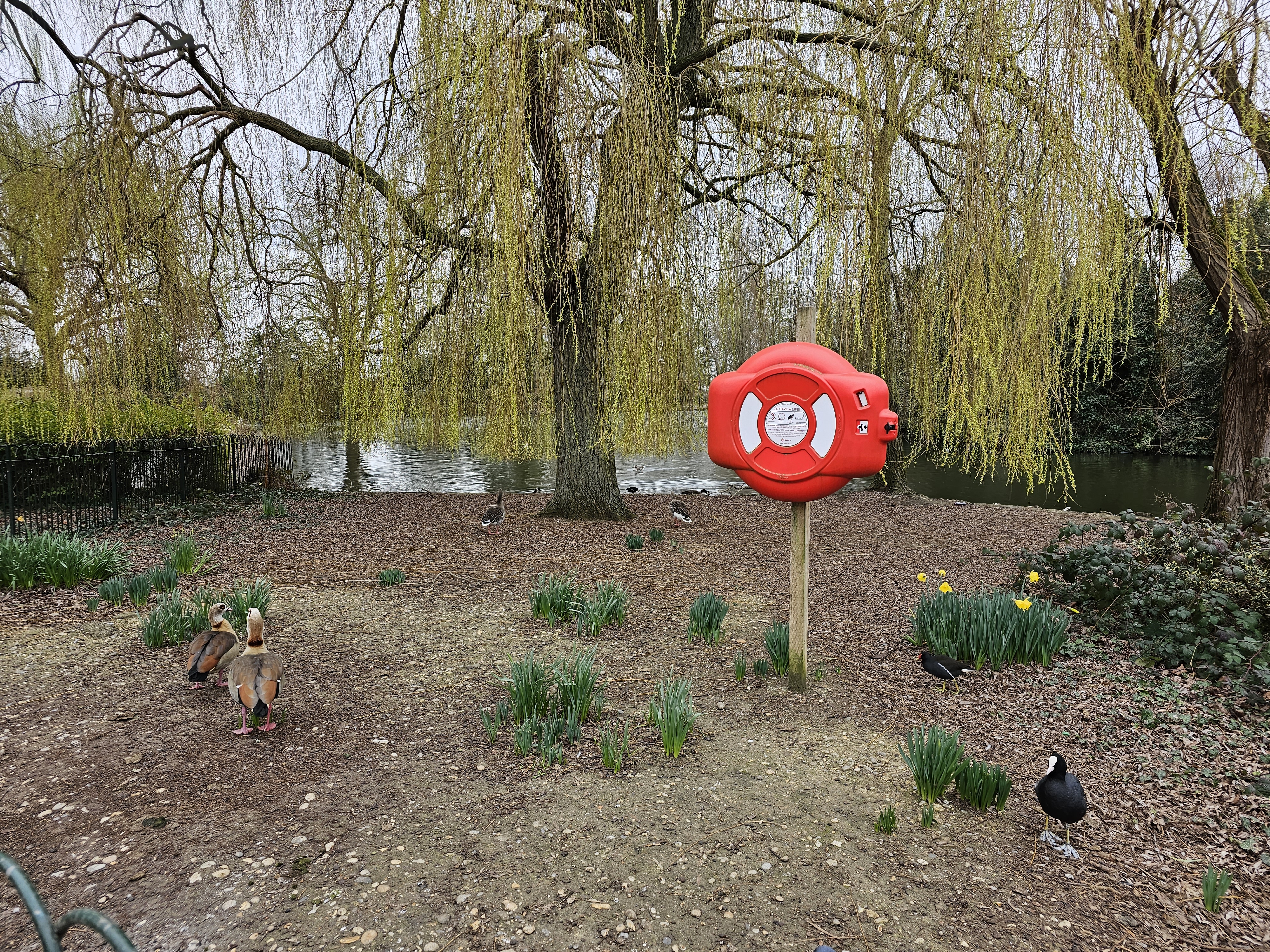
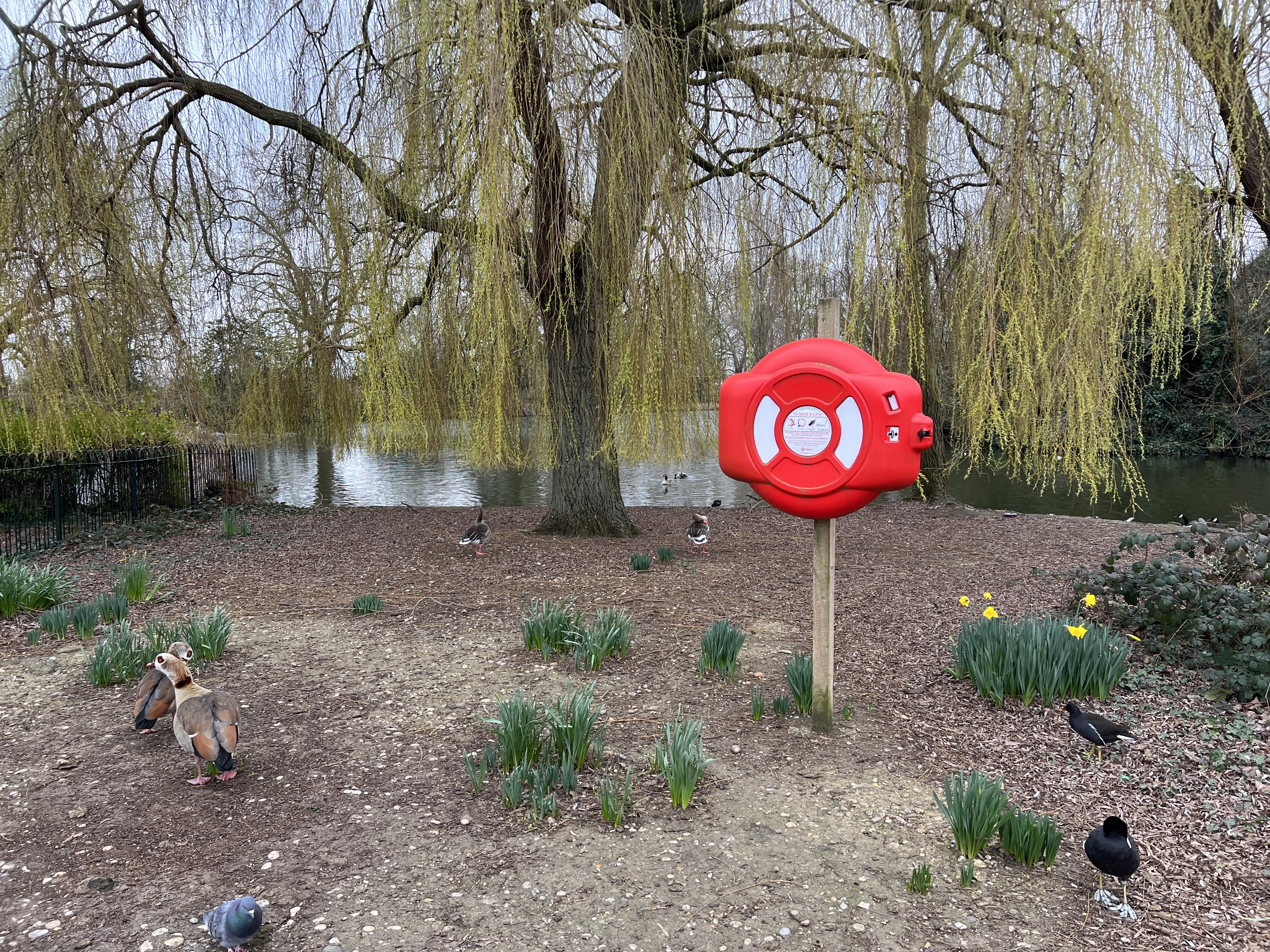
Above: All three cameras perform very well here, although the color balance is furthest away on the Galaxy S23 Ultra, with overly yellow/green tones.
Winner: Pixel 7 Pro / iPhone 14 Pro – this one is too close to call with both phones offering very similar and very pleasing photo processing in good light, with great sharpness and accurate colors. Samsung's colors and sharpening are divisive and not to my tastes.
3. Telephoto Cameras
To put it plainly, you just can’t beat an optical zoom, but Google is going to try and give it a run for its money. The Galaxy S23 Ultra takes an easy lead here with its optical zoom lenses for 3x and 10x photo and video that provides sharp and clear photos, although attuned to the rest of the cameras on the Galaxy, slightly overprocessed. Optical zoom is one thing though, and with the S23 Ultra, any digital zooming beyond the 10x camera produced pretty poor results, with monumental levels of smoothing and saturation, I think we have got to the bottom of why Samsung includes 5 optical lenses.



Above: The comparison above shows the focal length differences between the optical zooms on the three cameras.
Google offers a 5x optical zoom on its Pixel 7 Pro, which in itself is terrific quality, and the Pixel really shines when digital zooming up to 10x. The large 48MP sensor allows Google's AI to work its magic producing astounding looking 10x photos, although it could turn up the sharpening just a little. While still not as natural as the optical zoom on the Samsung, without close inspection, you might not even notice.
The iPhone has a paltry by comparison 3x optical zoom, while optically it is excellent at its three-time magnification, it really doesn't stack up against the longer zooms in the other phones. The iPhone digital zoom is also a long way behind the Pixel, when zooming in to 10x digitally, the resulting images look both over-smoothed and over-sharpened.



Above: The Samsung phone with its 10x optical zoom has a clear edge in terms of sharpness, the Pixel does a very amicable job to make up the difference, while the digital zoom on the iPhone has a lot of work to do.
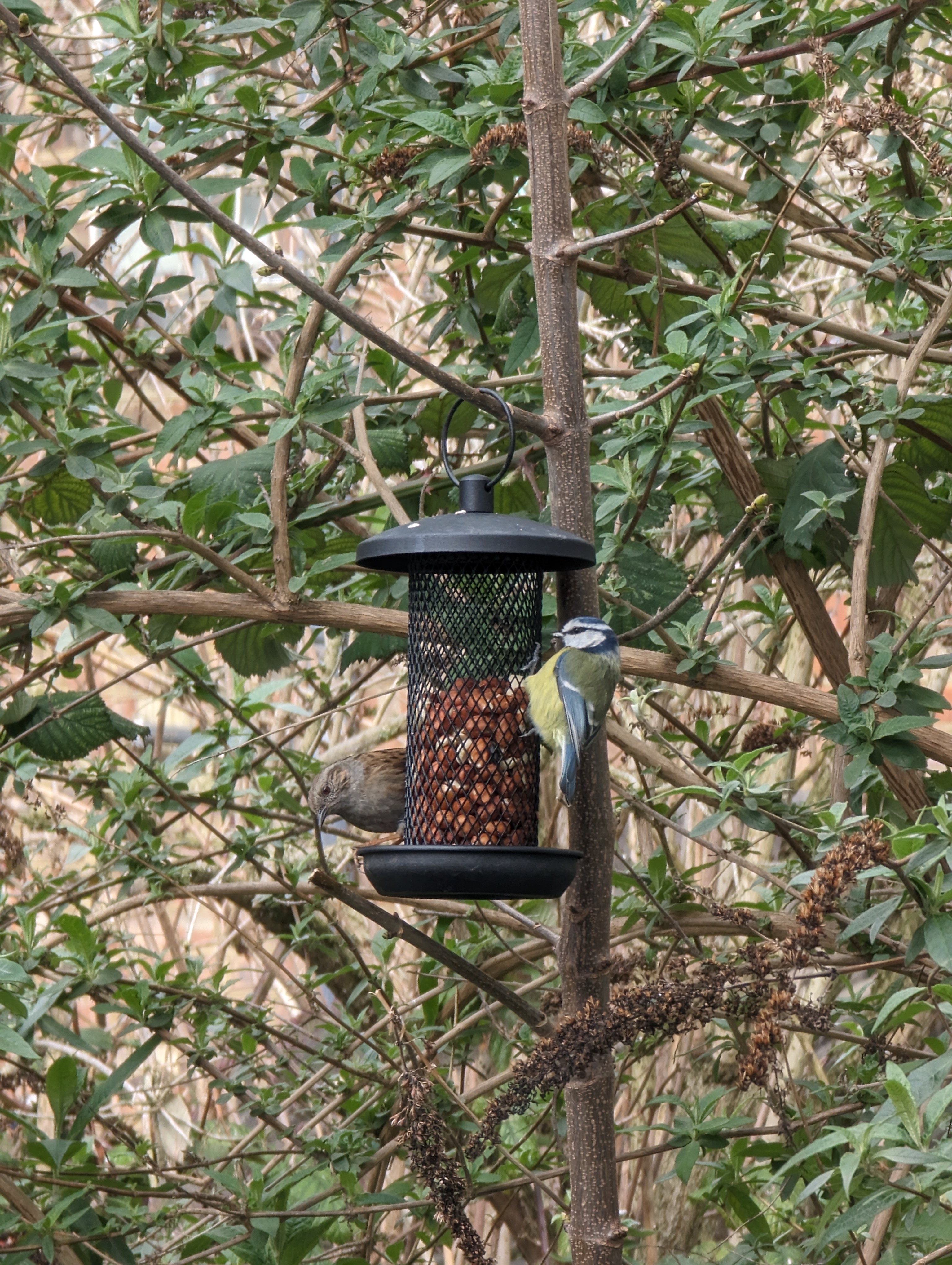


Above: The optical zoom on the Galaxy trumps the others, although the Pixel's zoom does very well on the bird subjects, only losing some detail in the background.



Above: The iPhone's 3x optical zoom is potentially outperformed by the Pixel's digital zoom, with Apple applying some aggressive oversharpening and far too warm colors. The Samsung's 3x optical zoom camera again nails the details best.
Winner: Samsung Galaxy S23 Ultra – optical zoom triumphs still over digital, although Google is catching up fast with its processing. The iPhone has a long road to go with its digital zoom processing and middling optical zoom length.
4. Wide-angle Cameras
Let's talk about wide-angle cameras. The unloved child of the phone lenses, its there when you need it, but it will never be your favorite lens. All three phone makers know this and spend the least amount of time talking up their wide-angle cameras, and the least amount of development. All three phones offer tried and tested wide-angle cameras, which means, not the latest technology, so don't expect results to match the main camera photos.
All three phones have incredibly similar 12-megapixel wide-angle cameras, that all perform very similarly. The only difference between the cameras is processing, with the Galaxy exhibiting more sharpness and saturation, while the Pixel and iPhone are more balanced and appear to offer control of highlights.



Above: All three phones perform really well here, the Pixel 7 Pro captures the scene most accurately, the iPhone captures the most detail in the cloudy sky, but the colors are washed out, and the S23 pumps the saturation a little too much.
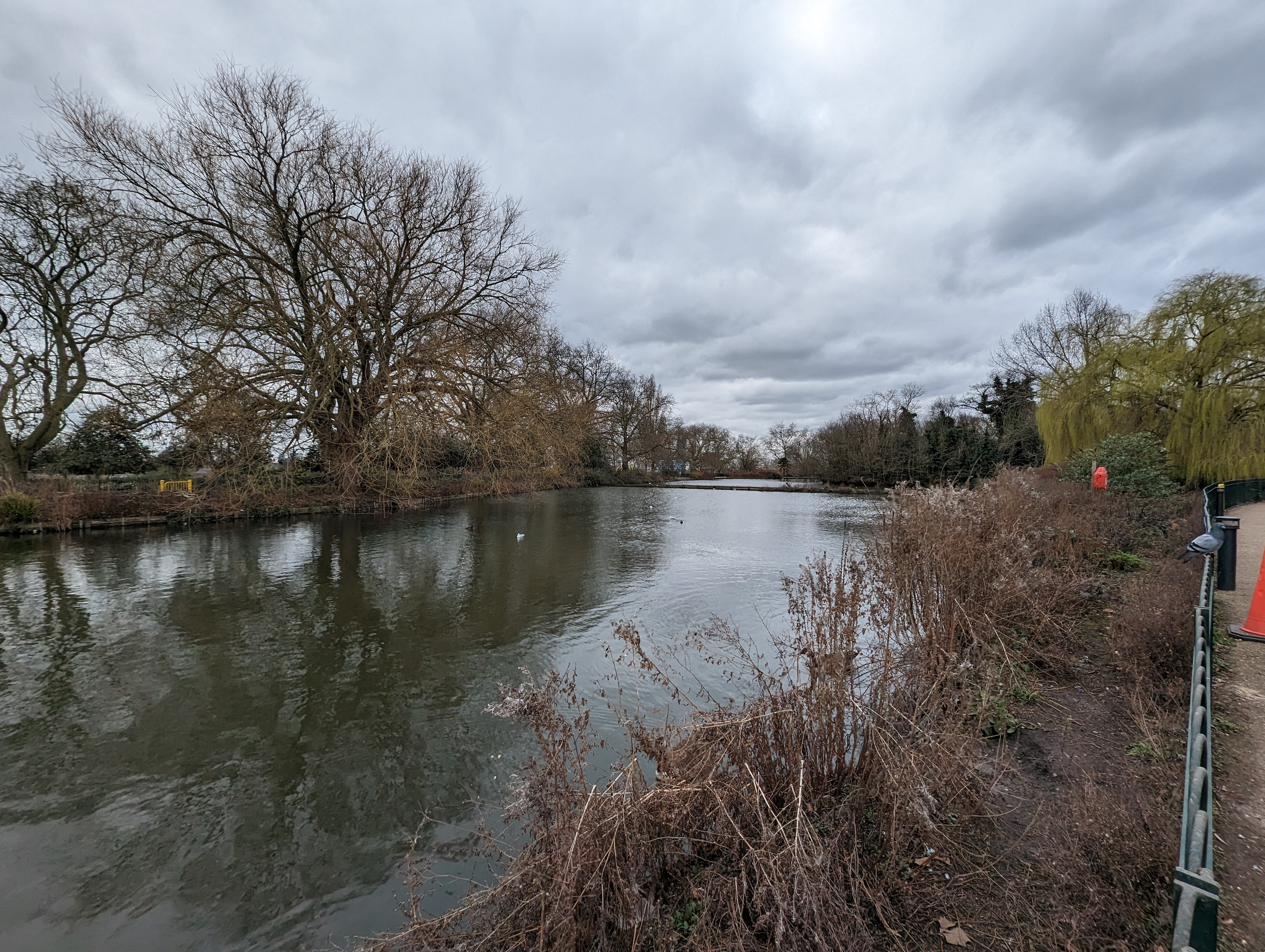


Above: Again, all three are decent, with the iPhone and Pixel handling the corner diffraction the best. The S23 Ultra's colors are again just very weird, especially on the tree to the right.
Winner: iPhone 14 Pro / Google Pixel 7 Pro – both offer the more balanced images, with more accurate color and white balance, although there is really not much wrong with Samsung's efforts either.
5. Night and Low Light Photography
This is the hardest one to call as all perform equally as well, with all three companies' low light processing coming through strongly. We tested the main camera sensors, as this is where the software can really shine, with increased pixel counts, all three phones use pixel binning to coalesce individual pixels into larger combined pixels with more detail. Night modes are available using the other cameras, but with much-diminished returns.



The Pixel 7 Pro does the best job here in terms of contrast, although the S23 Ultra gives it a good run for its money by producing more sharpness in the image. The iPhone offers less contrast and weaker color.
The Samsung Galaxy S23 Ultra offers the sharpest low light photos, with Samsung’s liberal attitude to sharpening actually working well for these nighttime shots, with the S23 Ultra capturing the most texture in surfaces. However, sometimes the colors were a little off, with the S23 choosing to incorporate green hues in highlights where there shouldn’t be, and while the white balance was mostly accurate, it swayed a little warmer than in the actual scenes.
The Pixel 7 Pro has the most natural colors of all three phones, offering a very accurate white balance, the sharpness of the photos is good enough without being overdone, although they don’t look quite as tack sharp next to the S23 Ultra's heavy processing. The Pixel manages to maintain the best contrast in any of the phones, being the only phone that does not over-lighten the shadows.
The iPhone also offers great sharpness in its low-light photos, and while the colors tend to be accurate, they lean heavily on warm tones, so images were consistently coming out not reflecting reality. One issue with the iPhone, in scenes of high contrast, it would struggle to allow dark areas to remain dark and would try to evenly light a whole scene instead of portraying it accurately.



The Pixel 7 Pro produces the most color-accurate image with good sharpness and contrast. The Samsung image is plenty sharp but oversaturated with a strange inaccurate yellow hue.



Nearly impossible to separate, the Pixel 7 and S23 Ultra both do a fantastic job on this photo. The iPhone struggles with trying to lighten up the shadows too much.
Winner: Google Pixel 7 Pro – a very tough call against the Galaxy, but the Pixel offers the best accurate colors and great contrast control. The Samsung offers the most texture and detail, while the iPhone’s overly warm hues and over-brightening let it down.
6. Portrait Modes
Each manufacturer is constantly trying to outdo the others with its improvements in AI in image processing, and in no place have we seen this come to the forefront than in 'portrait modes'. This is the mode that lives in the camera app of each phone and uses AI algorithms to find the edge of a person or object and then artificially blur the background, in an attempt to look more like a DSLR/mirrorless camera photo.
All three phones in practice are actually very accomplished at this now, with all the cameras doing a good job of locating the edge of my person and blurring the background. There isn't much to separate the phones on here. Google and Samsung have a bit of a hard edge to their blur, while Apple likes to have their blur soften around a subject, each is its own look, but I wouldn't say either is better, and neither looks like a true photo taken with a large camera/lens.



Above: At night all three phones do a good job of maintaining detail. The Pixel does the best job, with its night mode capturing the best skin tones and colors, although the iPhone is a close second. The Galaxy gives my skin a weird green tinge and makes me look a little sickly.



Above: All three have different styles, with the iPhone coming in very flat, with a little too much brightness, the Pixel and Galaxy are more punchy, and offer a little more contrast and dynamic range in the sky behind.
Winner: Google Pixel 7 Pro – Another win for the Pixel, with the Pixel's excellent night mode shining through on low-light portraits and offering good detail and separation during the day.
7. Selfie Cameras
The iPhone has a slight advantage over the Galaxy, with a wider aperture, however, both cameras shoot 12-megapixel selfies with their front-facing cameras. The Pixel comes in slightly behind with 10.8MP, but in reality that is a very marginal difference.
The phones are all capable of a 1x selfie mode, which offers a more flattering angle, and a 0.7x group selfie mode, which is a wider angle, and means more people can get in the image, but the image is more stretched and unflattering.
You can see in the range of photos below that the Pixel applies a much more contrasty finish to its front-facing camera than the other two phones, with Apple and Samsung going hard on brightening the photo/face to an even light, in the pictures below the lightening on my black coat is too much. The iPhone is actually the worst offered here.

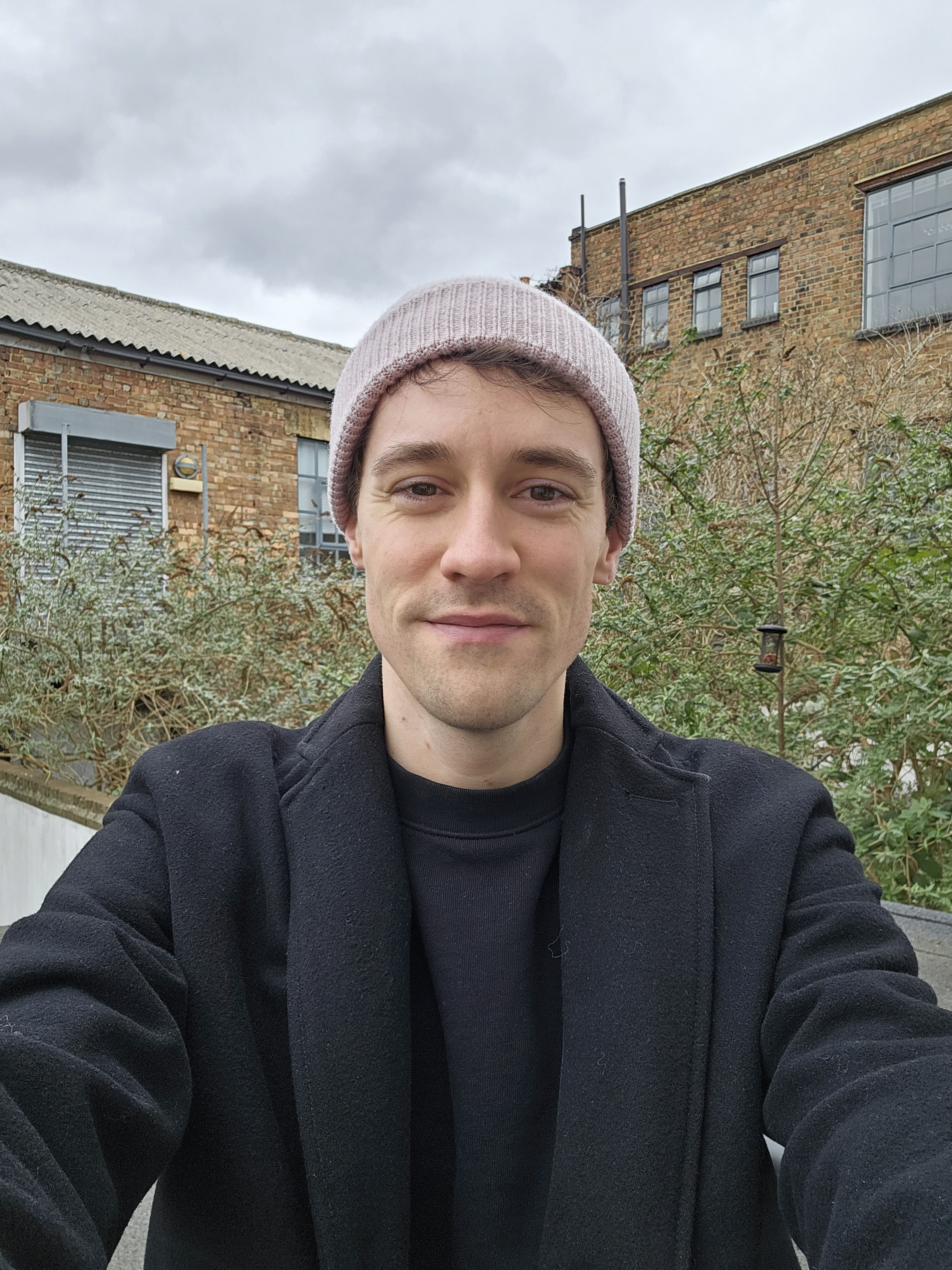




Above: Selfies taken on all three phones at 0.7x and 1x selfie modes.



Above: A simple selfie against a white wall. You can see the different white balances in play, with the Samsung actually going a little cool and washed out, and the iPhone has gone too warm and very over-brightened. The Pixel sits in the middle and offers the best skin tone and contrast.
All three phones can use their AI-powered portrait modes on the front-facing cameras too. The iPhone has the added benefit of its face-ID system also offering depth information for the front camera to apply these portrait effects. This, works very well, in that the portrait mode on the iPhone was the best, but its overall image had some over-brightening issues.
The over-brightening has nothing on the Galaxy, where I don't know quite what is happening. The Pixel on the other hand was a little too dark, although this contrast still makes the best photo out of the three. Getting the most accurate skin tone and colors.



Above: The front-facing camera with each brand's portrait mode algorithms. The iPhone offers the best edge and separation, but the Pixel has the most pleasing skin tone and contrast.
Winner: Google Pixel 7 Pro – The combination of excellent (if a little too dark) contrast and better skin tones makes this a win for the Pixel. The iPhone and Samsung both apply lightning too aggressively resulting in an unnatural-looking photo.
8. Macro Modes
All three phones have a dedicated macro photography mode for close-up imaging, and while they all work well enough to be useful, none of them are outstanding examples of what can be achieved with a good macro lens on a mirrorless camera.
All three phones have the same issue of macro photos looking like a quick zoom effect, with the center of the image a sharp circle surrounded by a strange blur with a lot of weird colors. The photos remind me a lot of very old vintage camera optics. This might be something to do with the phones using their wide-angle cameras for macro work, which is not the ideal focal length, with a full-frame camera macro lens typing being 90mm.
The Pixel 7 Pro is the best out of the three, with excellent sharpness in the center with some blurring around edges, but very little color fringing for artifacts, although I found I could not get quite as close with the Pixel as the other two phones, although this was irrelevant as the closer shots with the other two phones were worse quality.



Above: The Pixel created the most balanced image without too much blur around the edge. The other two phones struggled with blur and introduced some color fringing toward the top of the image.
The Samsung is very sharp in the center, although exhibits a lot of Samsung's signature oversharpening, although the blur and color effects around the edges of the object and photo were the most significant and distracting.
The iPhone is sharp in the center and controlled its color-fringing effects better than the Samsung. Although in certain scenarios the iPhone just could not focus on certain objects, when testing on a MicroSD card (below), after about five minutes of trying I abandoned my attempt.



Above: The iPhone had a nightmare on this one and couldn't focus at all using its macro mode for some reason. The Galaxy could get quite close, but the Pixel offers a slightly wider but sharper and clearer macro.



Above: The iPhone and Pixel get a lot of detail while maintaining a good contrast and accurate color. The Galaxy is sharp but washes out the color of the leaf and over-brightens the whole scene.
Winner: Google Pixel 7 Pro – while not being able to get in as close as the other two, it produced the cleanest and most controlled image, when the iPhone could focus properly, it produced nearly equal macro shots, with the Galaxy bringing up the rear.
9. RAW
For the uninitiated, RAW photos are images captured directly from the camera sensor, prior to the software applying any processing to them, hence being raw data, this data is much more in-depth, and can be manipulated in image editing software such as Adobe Lightroom to produce unique edits without affecting the photo quality. The biggest downside of RAW photos is their generally massive file sizes.
Each of the three phones offers a RAW capture mode, although neither the Pixel nor iPhone can touch the fine-grained control of the Galaxy S23 Ultra RAW photos. The Samsung offers full manual control over its RAW capture, allowing every setting to be dialed in individually. You can record RAW in 50MP or 12MP from the main sensor, or 10MP/12MP from the other sensors depending on their maximum size.
The iPhone allows you to shoot in its excellent proprietary Apple ProRAW format, in either 12MP or 48MP sizes, although it lacks the pro-control features offered by the S23 Ultra, instead relying on the camera software to nail the exposure and other settings. Either a good or bad thing, depending on your viewpoint, the iPhone requires you to turn ProRAW on for each photo you wish to capture, you cannot just leave it on and save images in RAW and JPEG at all times. While this is a huge space saver, not having dozens of unwanted RAW images, you might miss out on having that perfect photo in RAW format later if you forget or don’t have time to turn it on.
Bringing up the rear is the Google Pixel 7 Pro, offering RAW capture, but only at 12MP from all its three rear cameras, there are also no manual controls when taking RAW images, however, you can shoot in RAW and JPEG full time, with the RAWs sorted into a separate folder that can easily be organized and wiped clean.
Winner: Samsung Galaxy S23 Ultra – the largest megapixel RAW files with the most fine-grained control. Apple offers up excellent ProRAW images, while Google just about does the minimum.
10. Conclusion
Okay, let's get this out of the way. All of these phones are excellent phones that take fantastic pictures that you can share and treasure, each has its own quirks and personality that might appeal to you as a photographer. So there is absolutely no right or wrong answer in picking which of these is the best camera phone.
Saying that... the best camera phone is the Google Pixel 7 Pro. Not only winning the most categories in this little test, but it is also the phone that shows itself as the best all-rounder, with versatility in everyday photography, night stills, and macro, even its selfie camera came out the best. It is also significantly less expensive than its two rivals.
The Apple iPhone 14 Pro still does what it does best, and offers a signature warm iPhone look and consistent, accurate, and true-to-life colors, this is probably the best phone of the three for the most natural and unprocessed photos, with the other two phones having more brand-specific character to their photos.
The Samsung Galaxy S23 Ultra is the phone to buy if you love zoom. Nothing can touch the three and ten times optical zoom lenses on the Galaxy S23 Ultra, the photos from the long 10x lens are the standout, with a lot of detail packed in, this might be the perfect camera if you are a keen bird watcher or sports enthusiast.
Read More:
• The best camera phones
• The best Android phone for photography
• The best iPhones for photography
Get the Digital Camera World Newsletter
The best camera deals, reviews, product advice, and unmissable photography news, direct to your inbox!

Gareth is a photographer based in London, working as a freelance photographer and videographer for the past several years, having the privilege to shoot for some household names. With work focusing on fashion, portrait and lifestyle content creation, he has developed a range of skills covering everything from editorial shoots to social media videos. Outside of work, he has a personal passion for travel and nature photography, with a devotion to sustainability and environmental causes.
